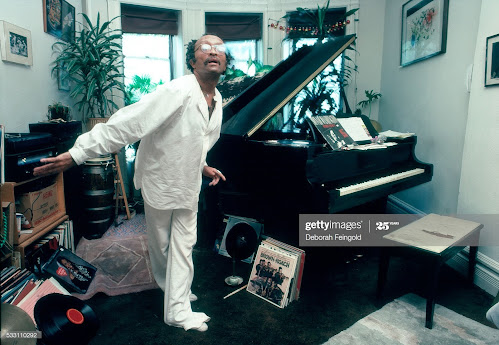By the autumn of 1940, Benny Goodman had undergone his first back surgery and was already on the mend. He had put his orchestra on hold for the summer, with a few men on retainer, like electric guitar wonder Charlie Christian, who'd taken the opportunity to visit family and friends back in Oklahoma, his first chance since he'd hit the big time the previous summer.
While still a popular bandleader, Goodman had somewhat lost some of his spark after the departure of some key men in his big band, namely Harry James and Gene Krupa, and with his current band on hold, rumours were rife. A big one was a possible merger with Count Basie, himself having some problems with his booking agency. Besides mutual admiration and being signed to the same label, a common thread to both bands was producer John Hammond, who had championed both and in 1942 became Goodman's brother-in-law.
 |
| Benny Goodman and Charlie Christian sitting in with the Count Basie Orchestra, Apollo Theatre, Harlem, October 24, 1940 (source) |










